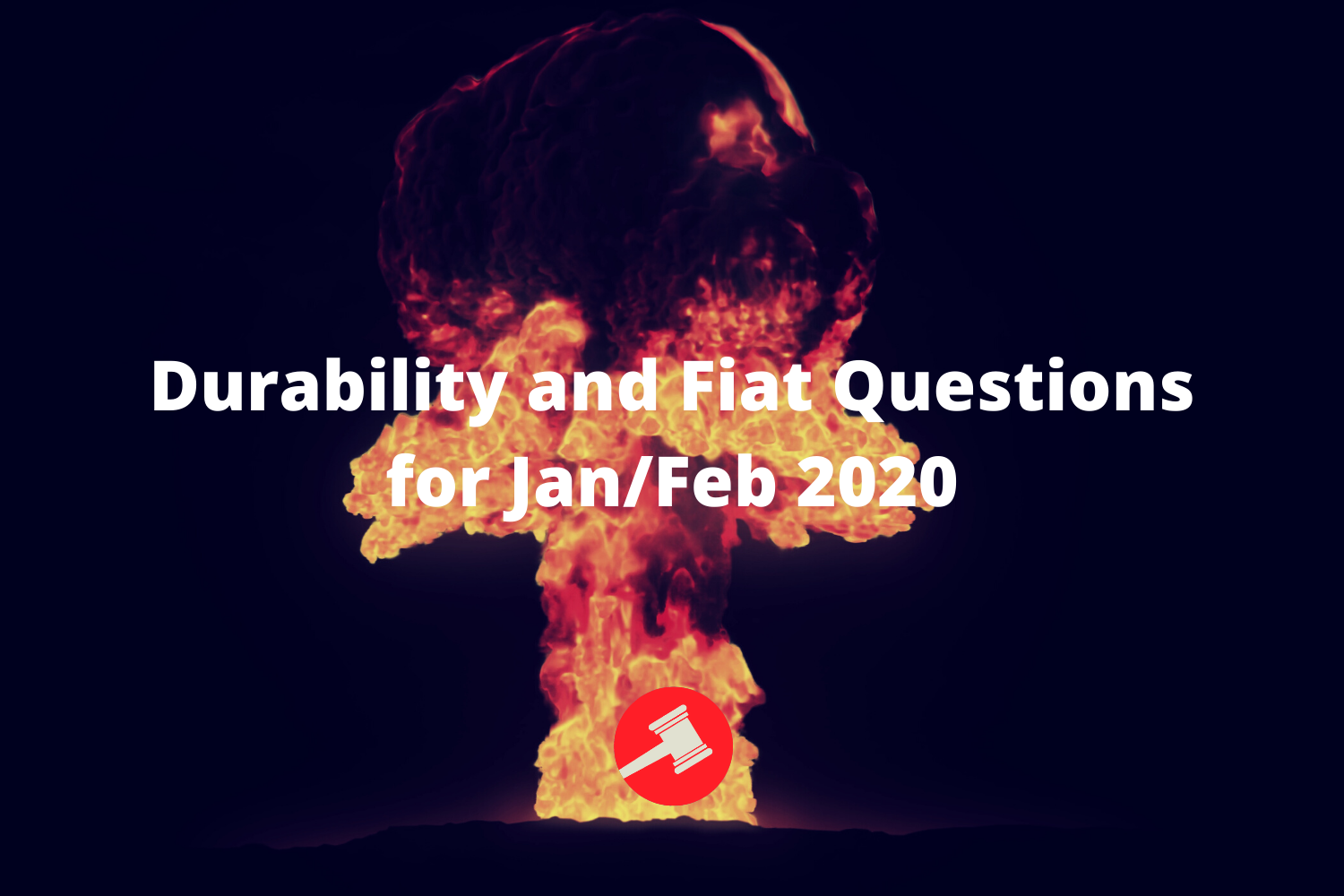What Does It Mean To Vote on an RVI

by Salim Damerdji, Bob Overing, and Oliver Sussman
Imagine the following debate:
- The neg reads two theory shells/interpretations (call them Interpretation 1 and 2)
- The neg wins Interpretation 1 is better than Counter-Interpretation 1
- The aff wins that Counter-Interpretation 2 is better than Interpretation 2
- The aff wins the RVI (i.e., reading false theory is abusive)
Many debaters and judges believe the following decision rule applies for voting on the RVI:
- Rule 1: If the aff’s counter-Interpretation 2 is better than Interpretation 1, vote aff
For example, if the neg reads ASPEC (I1) and Spikes Bad (I2), and the neg wins ASPEC and the aff wins Spikes Good (CI2), then the strength of the arguments for Spikes Good are weighed against the strength of the arguments for ASPEC. On Rule 1, the theoretical advantages of reading spikes outweighs the theoretical disadvantages of not specifying an actor.
There are many rounds where debaters make this assumption. For example, they might make weighing arguments like “spikes are key to reverse the neg side bias, and time skew is the biggest theory standard, so it outweighs the depth and clash standards on ASPEC. Therefore, my offense for CI2 outweighs the offense on I2 and you vote aff.” Another example arises with meta-theory arguments. For example, if I2 is a meta-theory argument, an aff debater might say “I’m winning my counter-interp to meta-theory, and meta-theory comes first, so my offense for CI2 outweighs the offense on I2 and you vote aff.”
But this reasoning is wrong. We argue the following decision rule applies:
- Rule 2: If the RVI solves more abuse than Interpretation 1, vote aff
Although a handful of staff members at Premier support Rule 2, this viewpoint rarely pops up in-round. Along these lines the aff debater could argue, “My RVI is justified based on reciprocity, and reciprocity is the closest internal link to fairness, outweighing their depth and clash standards on ASPEC; because I win my spikes good counter-interp, you vote aff on the RVI.” The standards for CI2 are not weighed against the standards for I2 on this example; the RVI justifications are.
The reason Rule 2 is true and Rule 1 is false is that standards for a counter-interpretation are never offense on their own. The classic response to the RVI that “you don’t win for being fair” is instructive here. If the aff proves Spikes Good, this isn’t a reason to vote aff. It’s not justified based on any fairness voter, and it would lead to absurd conclusions. If it were true, the aff could read spikes and say Spikes Good for theoretical reasons, suggesting this is a sufficient voter on its own.
Another way to see this is to consider the RVI as a meta-theory argument with the implicit interpretation “Debaters must not read false theory.” The offense to this meta-theory interpretation is not based on the standards-level arguments in the counter-interpretation. That the counter-interpretation for Spikes Good corrects for time-skew does not imply debaters must not read false theory.
There are, however, cases where the strength of an RVI justification relies on the strength of the counter-interpretation standards. First is the norm-setting argument: judges should set norms by voting for the best rule for debate, whether that be an interp or a counter-interp. This implies that the judge has more reason to vote for the RVI if the standards-level arguments are stronger; the better the standards, the better the norm. Second is the frivolous theory argument: RVIs deter frivolous theory by punishing debaters who cannot defend the truth of their interpretation in-round. The better the standards, the more frivolous the initial shell is. If we want to deter frivolous theory, it makes sense to make bigger examples out of the more frivolous shells. [2]
These two RVI justifications may lead judges to make decisions that agree with Rule 1, but this is only a byproduct of Rule 2 at work. If a debater advances either of these two RVI justifications, it is still the strength of the RVI – not the strength of the standards themselves – that justifies an aff ballot. It just so happens that the strength of the RVI correlates with the strength of the standards when these two RVI arguments are read.
Importantly, there are also RVI justifications where the strength of the RVI negatively correlates with the strength of the standards. In other words, the stronger the counter-interpretation, the weaker the RVI argument. One example is the time-skew argument: judges should vote against false theory because it skews the respondent’s time. The stronger the counter-interpretation and its standards, the more decisively wrong the initial interpretation was, so answering it was likely much easier and cost less time. Thus, the stronger the standards, the weaker the RVI justification. If the theory initiator makes this connection, there is also an obvious further impact to substantive education: the stronger the standards, worse the RVI is because it means there was more time available for topic debate that the RVI thwarts.
This time-skew argument is particularly strong because it puts the theory respondent and RVI defender in a double-bind: either 1) she decisively wins her standards, mitigating the strength of the RVI for time and topic education reasons above, or 2) she weakly wins her standards, mitigating the chance that she meets a requirement for RVI that the initial theory argument is false. To unpack this latter argument, recall that the RVI is essentially a meta-theory argument with the implicit interpretation “Debaters must not read false theory.” The chance that a theory shell violates this interpretation is a matter of degree. Weak standards for the counter-interpretation decrease the chance that the initial theory argument is false, and strong standards increase that chance.
The difference between this claim and what debaters typically argue is that in the status quo, debaters will say that their counter-interpretation outweighs another interpretation on the basis of the strength of the standards alone; they do not acknowledge that the strength of the RVI itself is an independent factor, and its justifications can rely to varying degrees on the strength of the standards. Debaters must take a further step beyond arguing for the strength of their standards for a counter-interpretation and explain why the strength of their standards is especially relevant for the type of RVI justification they choose.
In conclusion, we have argued three central claims. First, Rule 2, not Rule 1, is the correct understanding of the RVI. Second, with certain RVI justifications (norm-setting and frivolous theory), Rule 2 produces outcomes in alignment with Rule 1. Third, with certain RVI justifications (time skew), arguing that the RVI is dependent on the respondent’s standards can actually decrease the strength of the RVI or even lead to a deadly double-bind. Debaters should more carefully choose RVI justifications with these facts in mind.
End Notes
[1] Special thanks to John Scoggin and other students and faculty at Premier Debate Los Angeles for inspiring and discussing this idea at length with the authors.
[2] To be clear, we are not endorsing these particular justifications as good arguments for the RVI but rather exploring the implications of these justifications when argued and won in a given round.
Salim Damerdji
Salim was Director of Philosophy Curriculum at Premier 2016 Los Angeles. At the 2014 TOC, he was the 11th speaker and 11th seed. His students at Mission San Jose and MVLA have earned 17 bids in two years, won two quarters bid tournaments, and reached quarters of TOC twice. Salim studies Philosophy and Statistical Science at UCSB.
Bob Overing | Co-Director
Bob is a co-director of Premier, coach for Loyola in Los Angeles, and debater for the USC Trojan Debate Squad. As a senior in high school, he was ranked #1, earned 11 bids and took 2nd at TOC. In college, he cleared at CEDA and qualified to the NDT. His students have earned 80 career bids, reached TOC finals, and won many championships.
 Oliver Sussman
Oliver Sussman
Oliver Sussman was a student at Premier 2016 Los Angeles and Premier Invite Week. He is a rising senior at Cambridge Rindge and Latin School. Last year, he was top speaker and 2nd place at Harvard and cleared at the Tournament of Champions after receiving 5 TOC bids.




